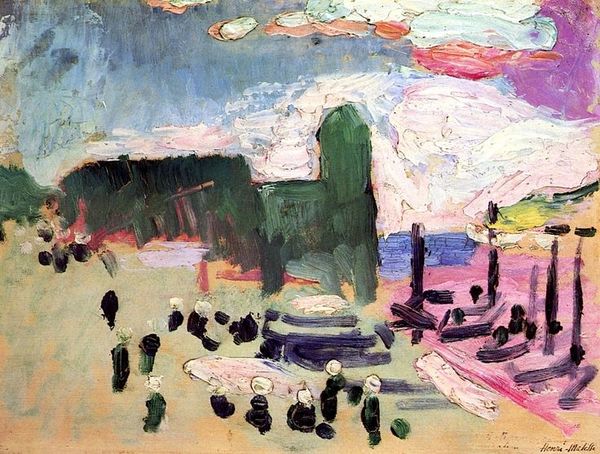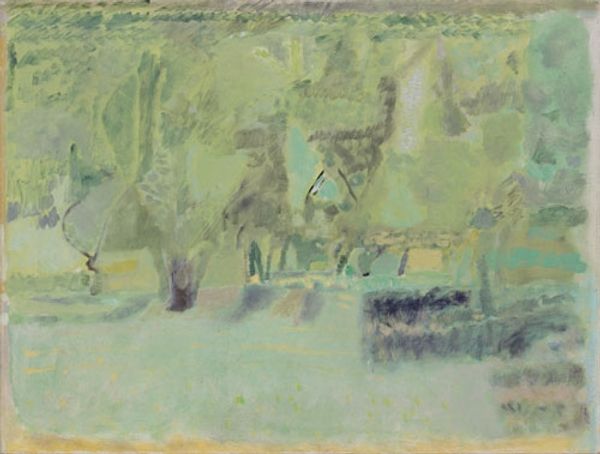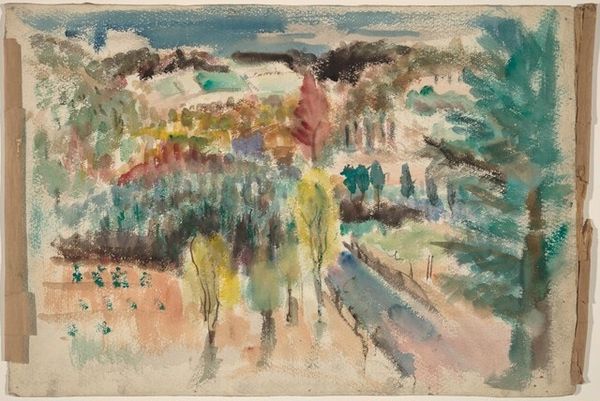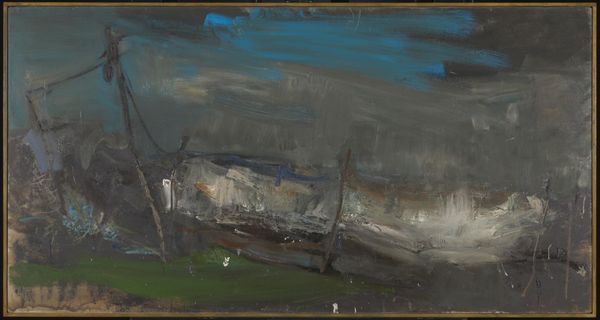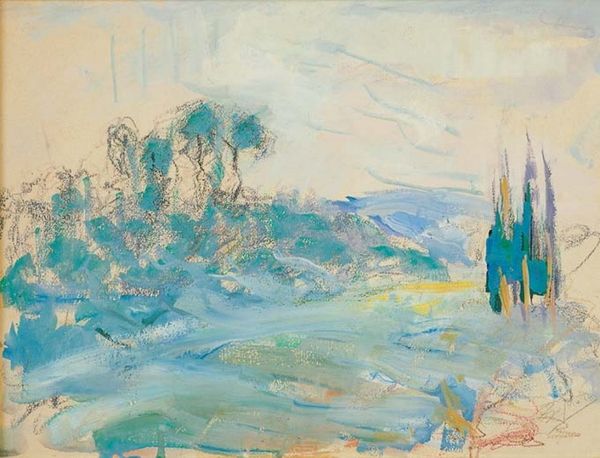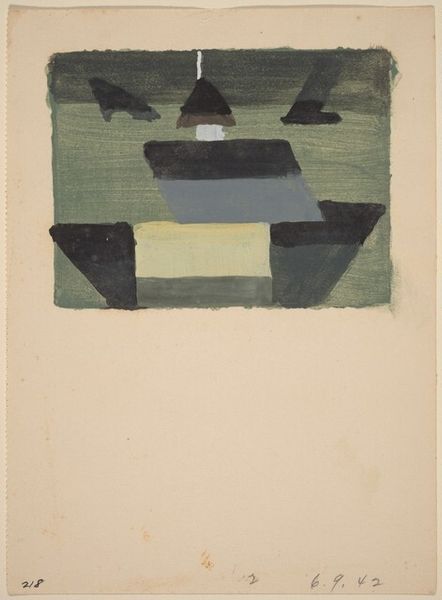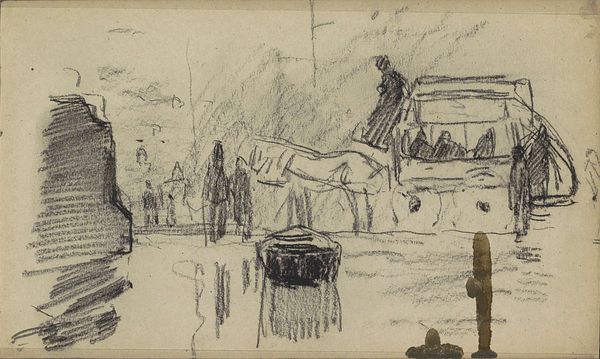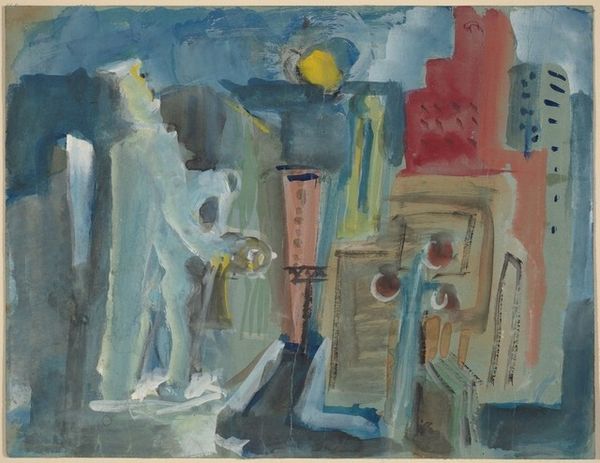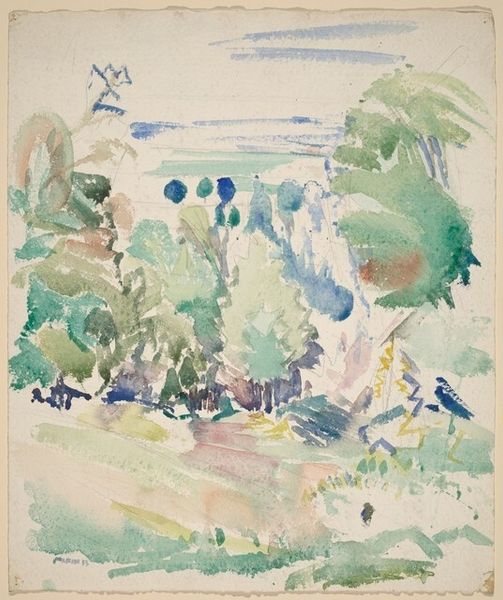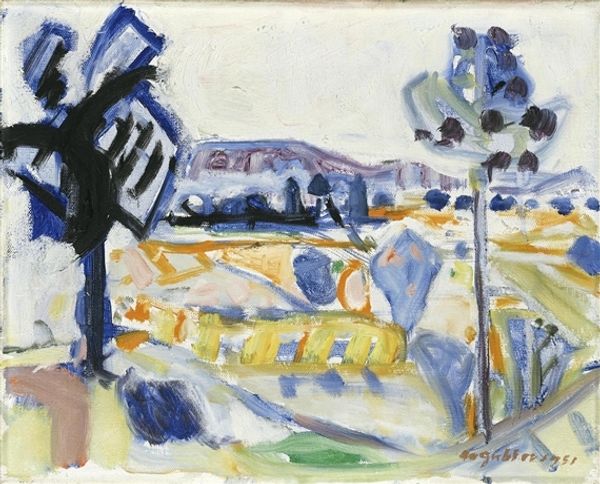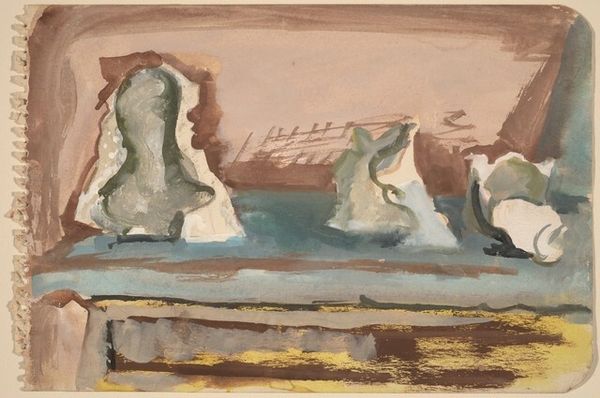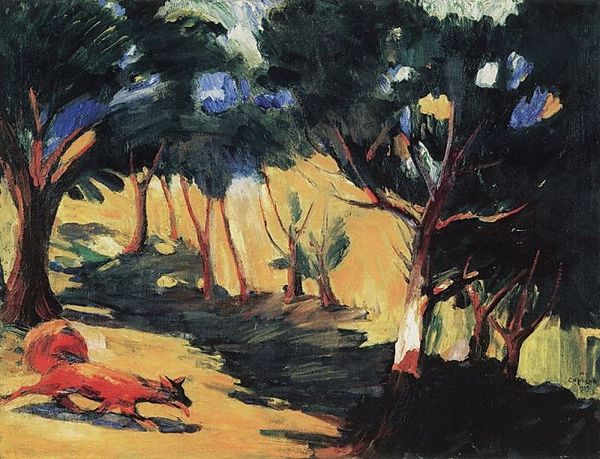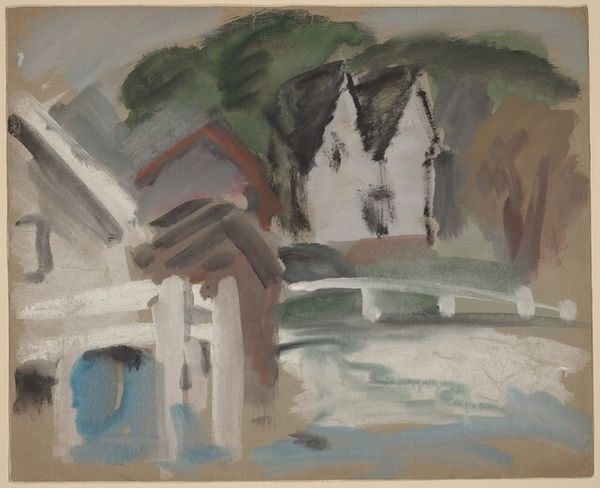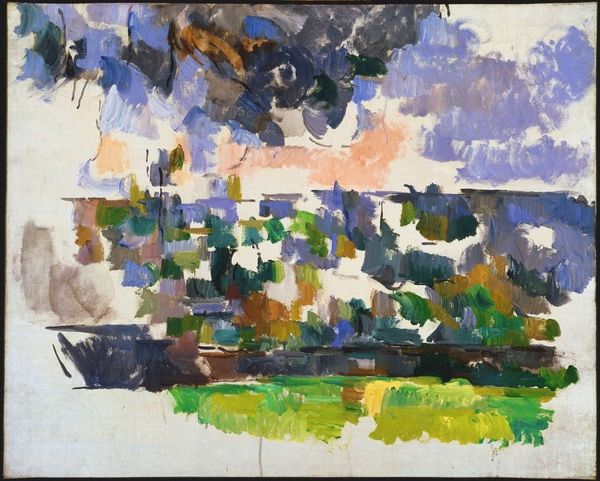
Dimensions: overall: 51.1 x 76.2 cm (20 1/8 x 30 in.) framed: 62.4 x 87.3 x 6 cm (24 9/16 x 34 3/8 x 2 3/8 in.)
Copyright: National Gallery of Art: CC0 1.0
Curator: Oh, this is one that always grabs me. It’s "Untitled (figure lying on park bench)", painted around 1936 by Mark Rothko. Editor: I see someone surrendering to a kind of dreamy melancholy. The hazy atmosphere, the subdued colors...it feels like a pause, a moment of introspection. Curator: Absolutely. Rothko uses these broad strokes, this kind of flattened perspective... It feels very immediate, almost as if he just glanced at this scene and caught its essence. The way the figure blends into the bench, you can see the precursor of his later color field works. Editor: It makes me consider the urban space during the Depression era. That figure's repose might signal fatigue or, perhaps, a subtle act of defiance against the demand for constant productivity. Who are we in our most vulnerable moments? The individual becomes absorbed by their surroundings. Curator: You’ve nailed it! It’s both personal and universal, you know? It evokes a certain vulnerability and yet the blurring suggests resilience, an effort to remain undisturbed amidst a busy landscape. He had such a gift for translating feeling. Editor: This idea of 'feeling' that you speak of, combined with his abstract leanings, anticipates post-war anxieties—existential concerns that found form in abstraction as a way to reject a world that felt increasingly incomprehensible. I see this as Rothko hinting towards that shift in collective consciousness. Curator: Gosh, it's interesting you bring in the shift in perspective because that blurring could suggest an attempt to create safe distance between observer and observed. Editor: True. "Untitled (figure lying on park bench)" feels strikingly pertinent today, offering insight into themes like mental health, social exhaustion, and the quest for brief refuge amid a system of exploitation. Curator: What a great reading! So, that’s Rothko wrestling with figuration before embracing pure color... and it resonates now perhaps even more poignantly. Editor: I agree. It shows us art’s uncanny capacity to reflect and anticipate societal concerns, across generations.
Comments
No comments
Be the first to comment and join the conversation on the ultimate creative platform.
